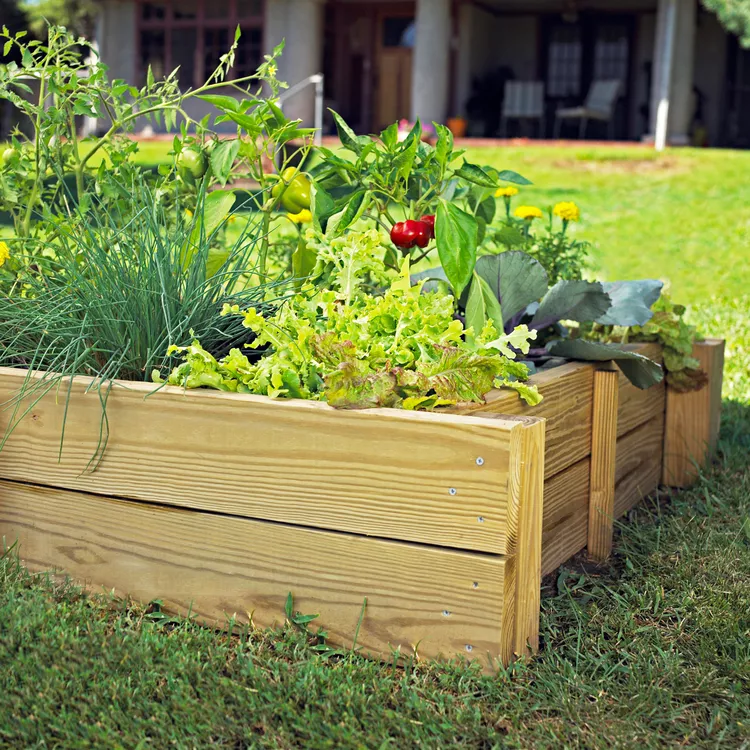A raised bed can solve various garden problems, especially if your yard has hard-packed, poor soil. Rather than trying to dig a new garden bed in the ground, a raised bed lets you rise above it all.
Besides having fewer weeds to deal with, growing in elevated beds can eliminate some bending and kneeling that can make gardening in regular planting beds feel like a major workout. Another bonus of raised garden beds: The soil in it warms faster in spring so that you can get planting a little sooner, and it also drains more quickly in wet weather. While you can buy plenty of raised bed kits, making your own out of a few wooden boards is not too difficult.
What You Need
- Rake
- Level
- (4) 1-foot-long 4x4s
- (8) 4-foot-long 2x6s
- (4) 2-foot-long 2x2s
- Drill
- Screws
- Angle-square
- Tape measure
- Shovel
- Deck screws
- Top soil
Step 1: Mark Off Garden Bed Frame
Start by determining how big you want your garden bed frame to be. If you're not sure, start with a 4x4-foot square garden bed frame; it'll be big enough for a variety of plants but small enough that you can still reach the center of the bed. Rake and level the ground so that your raised bed will lie flat.
Step 2: Create Garden Bed Frame Walls
Start with four 1-foot-long 4x4s for the corner posts; eight 4-foot-long 2x6s for the side rails; and four 2-foot-long 2x2s for the center stakes (you can buy these sizes from your local hardware store, or cut them to size if necessary).
Position your 4x4s on each corner of your square to form a garden bed frame. Then pick a wall to start with and screw your first 2x6 to connect the corners of the raised bed. Stack a second 2x6 on top of the first. The ends of the 2x6 boards should be even with the sides of the post. Use an angle square to make sure the rails and posts are lined up at right angles.
Step 3: Connect Garden Bed Frame Walls
Stand the garden bed frame sidewalls upright and opposite each other, with the posts on the outside. Screw the two side rails to the posts to form the other walls of the raised bed. Again, the ends of the rails should be even with the sides of the posts.
Step 4: Square Up Garden Bed Frame
Measure diagonally in both directions across the raised bed to make sure the frame is square. Then, adjust the raised bed until both diagonals are equal in length.
Step 5: Make Garden Bed Frame Sturdy
Take a 2x2 stake and place it at the middle point of one of the garden bed frame's outside walls. Dig or pound it into the ground, so the top of the stake is level with the top of the side rails. Fasten the stake to the raised bed side rails with deck screws ($37, The Home Depot). Repeat with each of the remaining three garden bed frame walls.
Step 6: Fill Garden Bed Frame with Soil
Once you've built your raised garden bed, fill the frame with topsoil. If you want, amend the soil with lots of organic matter, such as compost or peat moss. Water the raised bed well, and you're ready to plant!




















